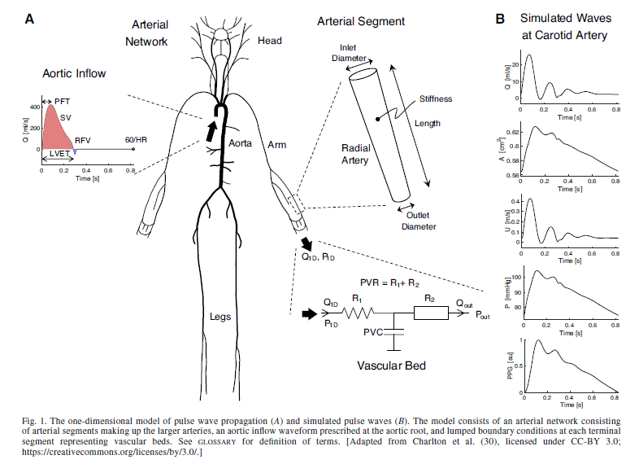Probleemstelling:
Pulse waves, resulting from the heart ejecting blood into the systemic arterial tree, inherently carry diagnostic information on the cardiovascular (CV) system and are the basis of CV assessment. They can be probed centrally (aorta) or on peripheral accessible measuring sites (upper arm, wrist, groin, finger, toe, retina, ear lobe, ...). Signals are measurable with (non-invasive) reference methods (pressure catheters, applanation tonometry, volume/photoplethysmography, ultrasound, MRI, …) but are also increasingly accessible to wearable technologies. Algorithms could exploit the dynamics of the CV system for a direct diagnostic and automated interpretation of a continuous stream of signal waveforms acquired under varying physiological conditions, from infants to adults. A fundamental hurdle, however, lies in the complex and highly dynamic character of these signals with a.o. archetypical changes across an individual’s life, first as the CV system grows and remodels from foetal life to youth, and further throughout adult life due to progressive changes driven by ageing and/or CV disease. The breadth of possible signals implies that robust algorithms require a biophysical/physiological basis for the correct interpretation of waveforms (just like a medical doctor cannot correctly interpret a CV signal without knowing the subjects age, sex, conditions under which data was acquired) and should be trained on massive number of pulse waves in settings and conditions mirroring their later intended use. Such data, basically, do not exist on a large scale, but can be generated in a virtual population of infants to adults.
